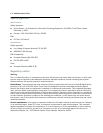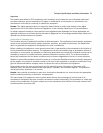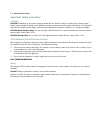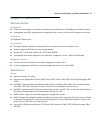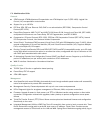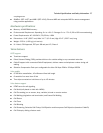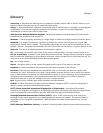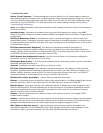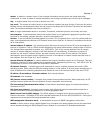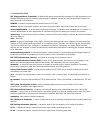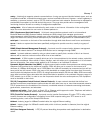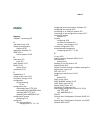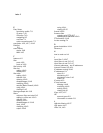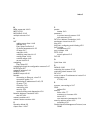2 Administration Guide
Class A, B, and C networks: The values assigned to the first few bits in an IP network address determine
which class designation the network has. In decimal notation, Class A network addresses range from 1.X.X.X to
126.X.X.X, Class B network addresses range from 128.1.X.X to 191.254.X.X, and Class C addresses range
from 192.0.1.X to 223.255.254.X. For more information on IP network address classes, see Appendix C,
“Understanding IP Addressing.”
client: An intelligent workstation that makes requests to other computers known as servers. PC computers on
a LAN can be clients.
community strings: Sequences of characters that serve much like passwords for devices using SNMP.
Different community strings may be used to allow an SNMP user to gather device information or change device
configurations.
CRC (Cyclic Redundancy Check): A computational means to ensure the integrity of a block of data. The
mathematical function is computed, before the data is transmitted at the originating device. Its numerical value
is computed based on the content of the data. This value is compared with a recomputed value of the function
at the destination device.
DCE (Data Communications Equipment): Term defined by standards committees that applies to
communications equipment, typically modems or printers, as distinct from other devices that attach to the
network, typically personal computers or data terminals (DTE). The distinction generally refers to which pins in
an RS-232-C connection transmit or receive data. Also see DTE.
DHCP (Dynamic Host Configuration Protocol): A service that lets clients on a LAN request configuration
information, such as IP host addresses, from a server.
DNS (Domain Name Service): A TCP/IP protocol for discovering and maintaining network resource information
distributed among different servers.
download: The process of transferring a file from a server to a client.
DTE (Data Terminal Equipment): Term defined by standards committees, that applies to communications
equipment, typically personal computers or data terminals, as distinct from other devices that attach to the
network, typically modems or printers (DCE). The distinction generally refers to which pins in an RS-232-C
connection transmit or receive data. Pins 2 and 3 are reversed. Also see DCE.
EIA (Electronic Industry Association): A North American standards association.
Ethernet: A networking protocol that defines a type of LAN characterized by a 10 Mbps (megabits per second)
data rate. Ethernet is used in many mainframe, PC, and UNIX networks, as well as for EtherTalk.
Ethernet address: Sometimes referred to as a hardware address. A 48-bits long number assigned to every
Ethernet hardware device. Ethernet addresses are usually expressed as 12-character hexadecimal numbers,
where each hexadecimal character (0 through F) represents four binary bits. Do not confuse the Ethernet
address of a device with its network address.
firmware: System software stored in a device’s memory that controls the device. The Netopia 4752’s
firmware can be updated.
gateway: A device that connects two or more networks that use different protocols. Gateways provide address
translation services, but do not translate data. Gateways must be used in conjunction with special software
packages that allow computers to use networking protocols not originally designed for them.
HDLC (High-Level Data Link Control): A generic link-level communications protocol developed by the
International Organization for Standardization (ISO). HDLC manages synchronous, code-transparent, serial
information transfer over a link connection. See also SDLC (Synchronous Data Link Control).



